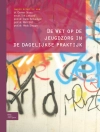Ernesto U. Savona and Sonia Stefanizzi The need to tackle the phenomenon of trafficking in human beings and, as part of this, the sexual exploitation of foreign women and children, has been increasingly recognized in recent years by many institutional, international and national agencies – as the copious documentation on the subject demonstrates. Yet, beyond all the interventions and provisions that have been made, the links: prostitution-migration, poor countri- rich countries, demand for sex from men in rich countries met by women from poor countries, still exist in all their starkness despite all counter-measures. These measures include, among others, information and prevention campaigns, enhanced co-operation between the various national and international police forces to combat the criminal organi- tions and the promulgation and implementation of new legislative pro- sions. Any analysis of the phenomenon shows with increasing clarity that even if the terms “clandestine immigration” and “trafficking in human beings” define in principle two different activities, each of them cons- tently becomes closely intertwined with the other. They are both, in fact, segments of a new immense area of criminal activity, generated by the migrants’ aspirations for a better life for themselves and their families, on one hand, and the obstacles which the immigration authorities put in the way of their realization, on the other.
Daftar Isi
Human Trafficking: A Crime Against Humanity.- Trafficking in Human Beings: Uniform Definitions for Better Measuring and for Effective Counter-Measures.- Collecting Data on Human Trafficking: Availability, Reliability and Comparability of Trafficking Data.- Enhancing Data Collection and Research on Trafficking in Persons.- Measuring the Non-Measurable: Towards the Development of Indicators for Measuring Human Trafficking.- A Criminal Network Approach to Understanding & Measuring Trafficking in Human Beings.- Review of Official Statistics on Trafficking in Human Beings for Sexual Exploitation and their Validity in the 25 EU Member States from Official Statistics to Estimates of the Phenomenon.- Qualitative Research in Trafficking – A Particular Case.- The Long Road from Rhetoric to Evidence on Trafficking in Human Beings: About Research Efforts to Prepare Proper EU Monitoring on the Matter.- Conclusions.
Tentang Penulis
Ernesto U. Savona is a Professor of Criminology at Università Cattolica in Milan and Director of TRANSCRIME (Joint Research Centre on Transnational Crime) Università di Trento/ Universita Cattolica. He is also the President of the European Society of Criminology (2003/2004) and Editor of the European Journal on Criminal Policy and Research. Savona is an author and editor of many books and articles on changes in crime and their implications for criminal policies. He is the coordinator of many research projects funded by International Organisations and National Governments.












